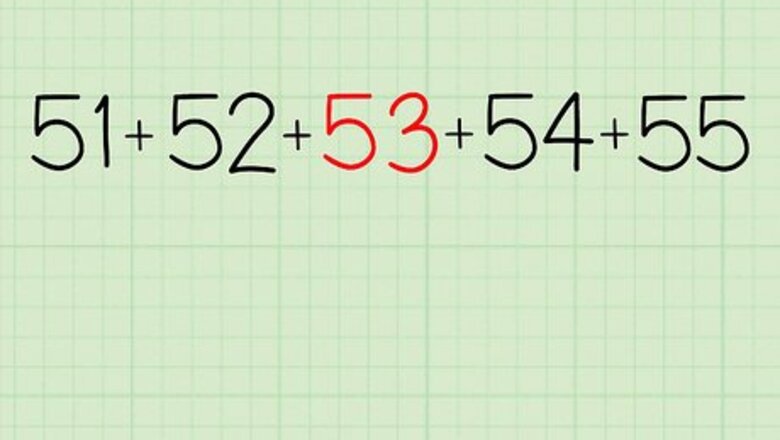
views
Multiplying the Middle Number by 5
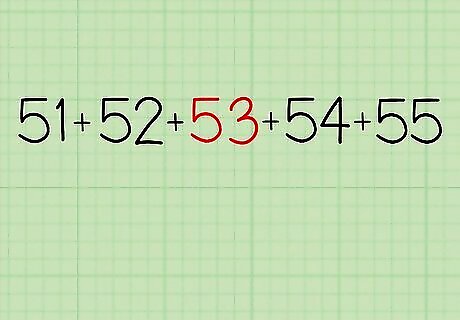
Identify the middle number in the series. Let’s say you’re given the numbers 51, 52, 53, 54, and 55. 53 is the middle number in this case, since it has two numbers before and after it in the series.
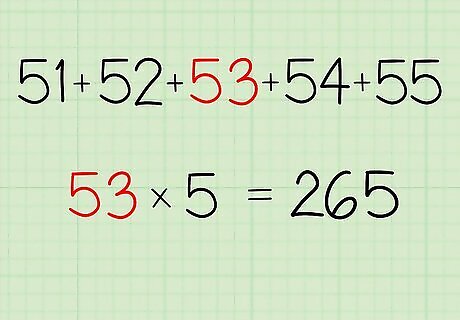
Multiply the middle number by 5 in your head. This is easier if you’re given small numbers like 1 through 5, of course (since 3 x 5 = 15). But it’s not that much more difficult to mentally multiply 53 x 5 = 265. First, separate 53 into 50 and 3. Second, multiply 50 x 5 = 250. Then, multiply 3 x 5 = 15. Finally, add those two results together: 250 + 15 = 265.
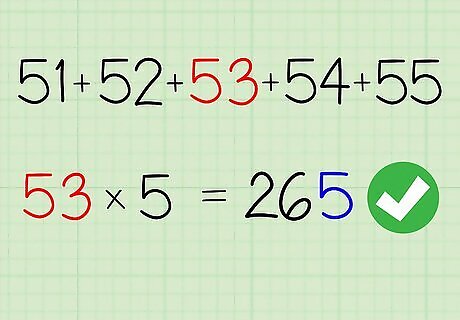
Confirm that your result ends in 5 or 0. The sum of any 5 consecutive whole numbers will always be divisible by 5, which means it will end in either 5 or 0. So, if your mental math gave you a result of 264 or 266, you know you need to recalculate.
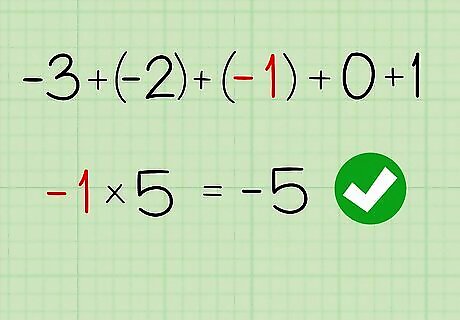
Try it with larger numbers or negative numbers too. For instance, say your consecutive numbers run from 1,263 through 1,267. To mentally multiply the middle number, 1,265, you could add up 5,000 (= 1,000 x 5), 1,000 (= 200 x 5), 300 (= 60 x 5), and 25 (= 5 x 5) to get 6,325 as the sum of 1,263 through 1,267. Or, let’s say that your given series is -3, -2, -1, 0, 1. You still multiply the middle number by 5 to get your result — in this case, -1 x 5 = -5, which is also the sum of (-3) + (-2) + (-1) + 0 + 1.
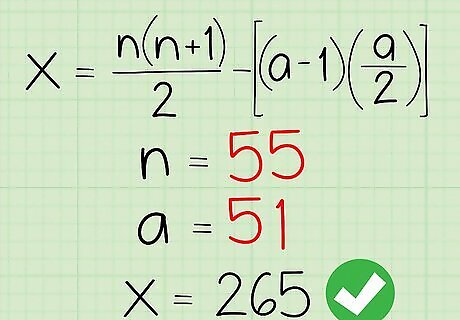
Grab a pencil and paper to see how it works. You can figure out the sum of any series of consecutive whole numbers by using the following formula, in which x = the sum, a = the first number in the series (e.g., 51), and n = the last number in the series (e.g, 55): x = (n x ((n + 1) / 2)) - ((a - 1) x (a / 2)) x = (55 x (56 / 2)) - (50 x 25.5) x = (55 x 28) - 1275 x = 1540 - 1275 x = 265 (and 265 / 5 = 53, the middle number)
Using the Highest or Lowest Number in the Series
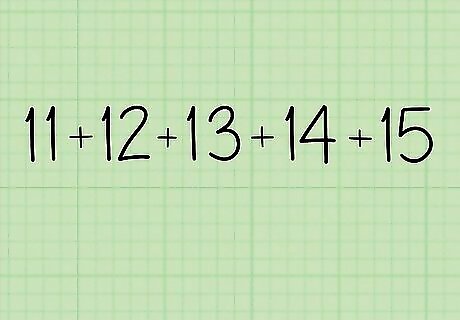
Pick any 5 consecutive numbers. For a simpler example (Example A), try 11, 12, 13, 14, 15. For more of a challenge (Example B), try 232, 233, 234, 235, 236.
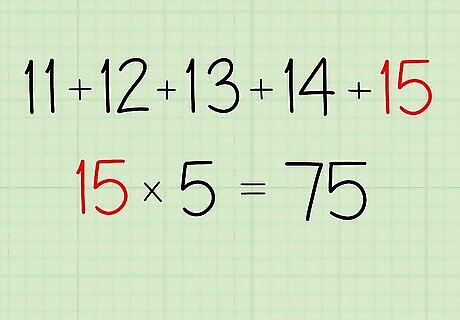
Multiply the highest number by 5. For Example A, 15 x 5 = 75. For Example B, 236 x 5 = 1,180.
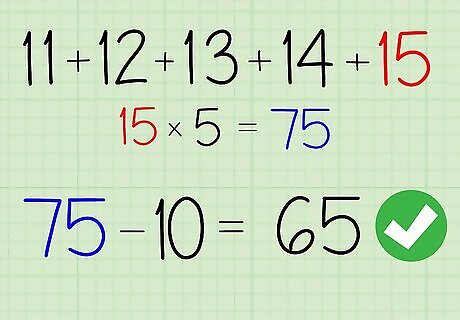
Subtract 10 from your result to get the sum of the series. For Example A, 75 - 10 = 65. For Example B, 1,180 - 10 = 1,170.
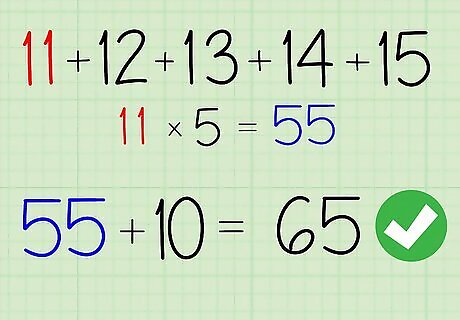
Use the lowest number instead by multiplying by 5 and adding 10. For Example A, (11 x 5) + 10 = 55 + 10 = 65. For Example B, (232 x 5) + 10 = 1,160 + 10 = 1,170. As you can see, you end up with the same results.
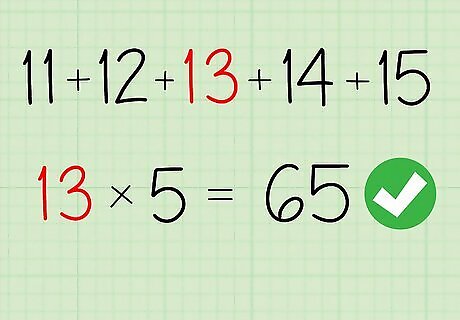
Compare your result to multiplying the middle number by 5. In Example A, 13 is the middle number, and 13 x 5 = 65. In Example B, 234 is the middle number, and 234 x 5 = 1,170. To do Example B in your head, remember that you can break it up: (200 x 5 = 1,000) + (30 x 5 = 150) + (4 x 5 = 20) = 1,000 + 150 + 20 = 1,170.
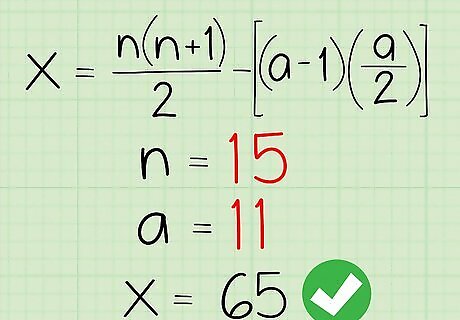
Use the formula to further confirm your result. Use x = (n x ((n + 1) / 2)) - ((a - 1) x (a / 2)), where x = the sum, n = the highest number, and a = the lowest number. For Example A: x = (15 x (16 / 2)) - (10 x 5.5) x = (15 x 8) - 55 x = 120 - 55 = 65 For Example B: x = (236 x (237 / 2)) - (231 x 116) x = (236 x 118.5) - 26796 x = 27966 - 26796 = 1170
Adding Up Other Amounts of Consecutive Numbers
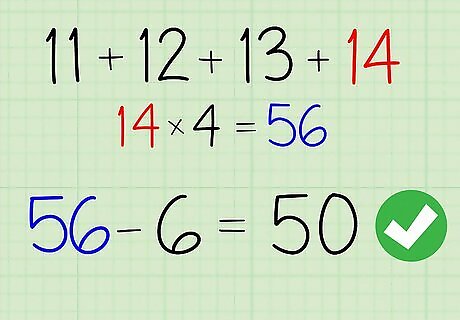
Add four consecutive numbers by multiplying the highest by 4 and subtracting 6. For example, try 11, 12, 13, 14; 14 x 4 = 56, and 56 - 6 = 50. Or, you can multiply the sum of the middle two numbers by two. In the above case, 12 + 13 = 25, and 25 x 2 = 50.
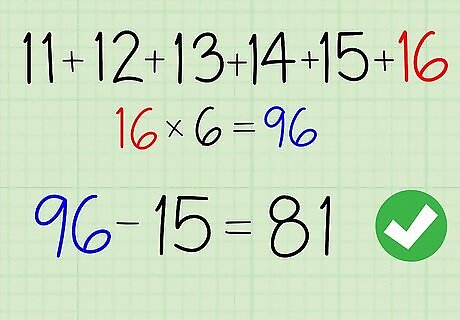
Add six consecutive numbers by multiplying the highest by 6 and subtracting 15. Say you have a consecutive series from 11 through 16. You’d multiply 16 x 6 = 96, then subtract 15 to get 81. Alternatively, you can multiply the sum of the middle two numbers by 3. In the above case, 13 + 14 = 27, and 27 x 3 = 81.
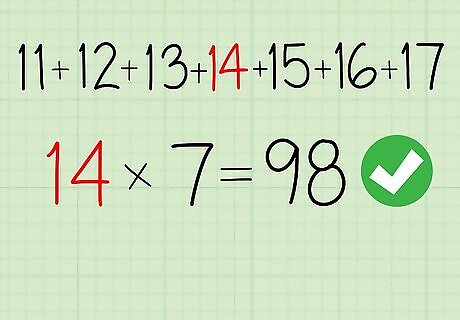
Add seven consecutive numbers by multiplying the middle number by 7. If your series runs from 11 through 17, 14 is the middle number. Thus, 14 x 7 = 98. For any odd number (3, 5, 7, etc.) of consecutive numbers, you can always just multiply the middle number by the total number in the series.
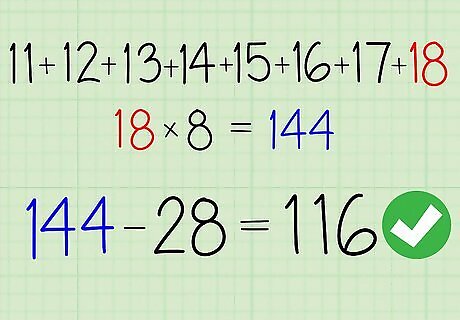
Add eight consecutive numbers by multiplying the highest by 8 and subtracting 28. If your numbers run from 11 through 18, multiply 18 x 8 = 144, then subtract 144 - 28 = 116. You can also multiply the sum of the middle two numbers by 4. In the above example, 14 + 15 = 29, and 29 x 4 = 116.
















Comments
0 comment